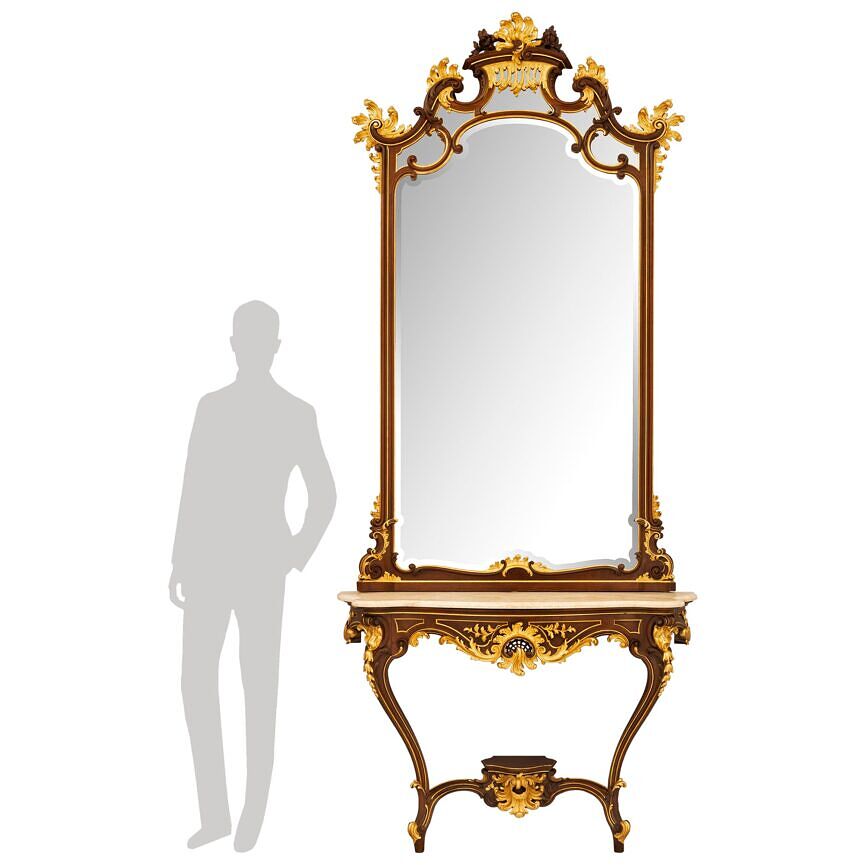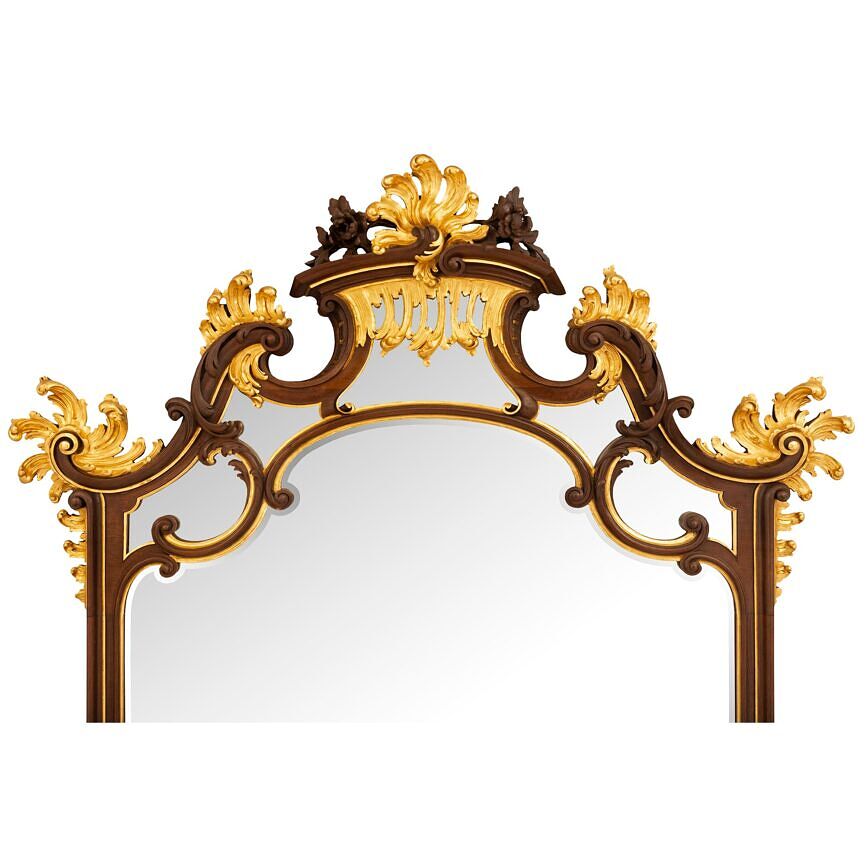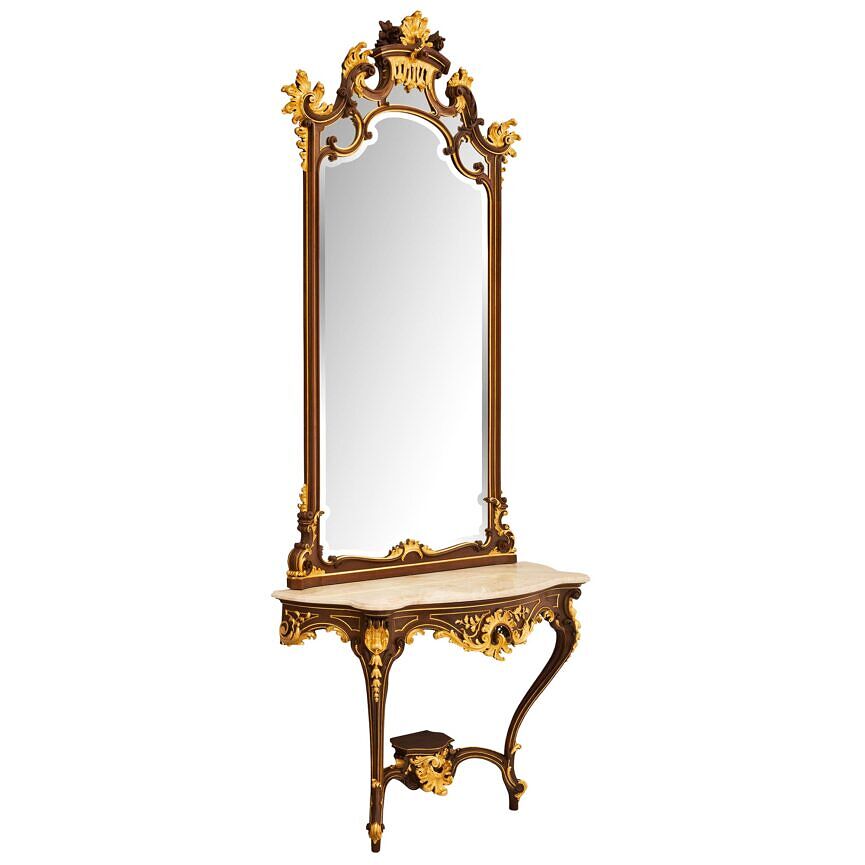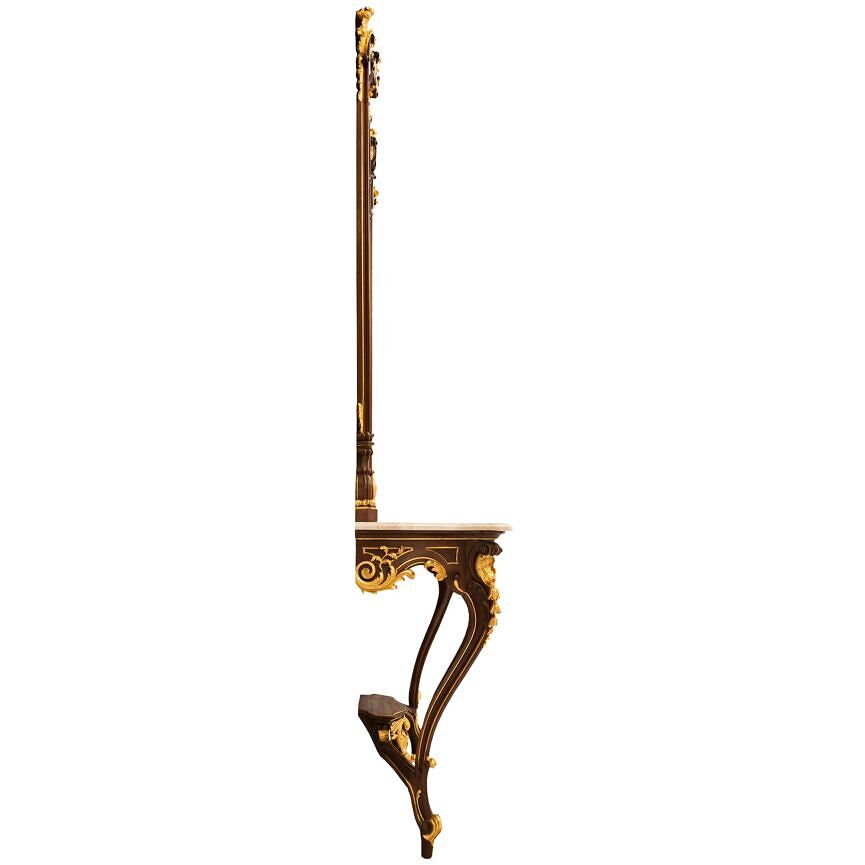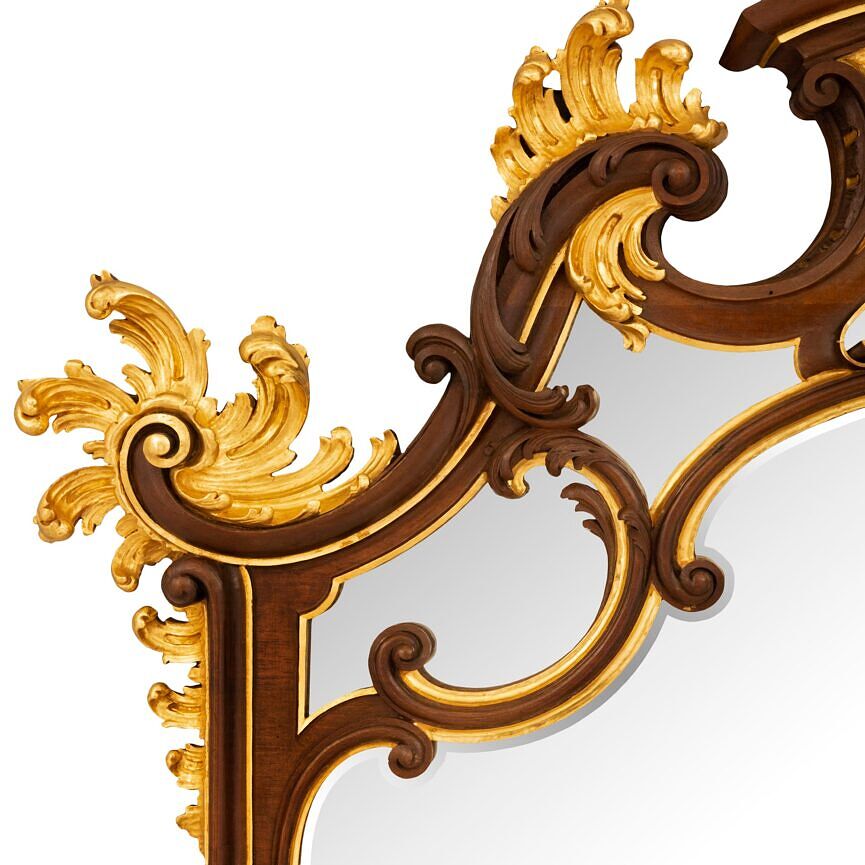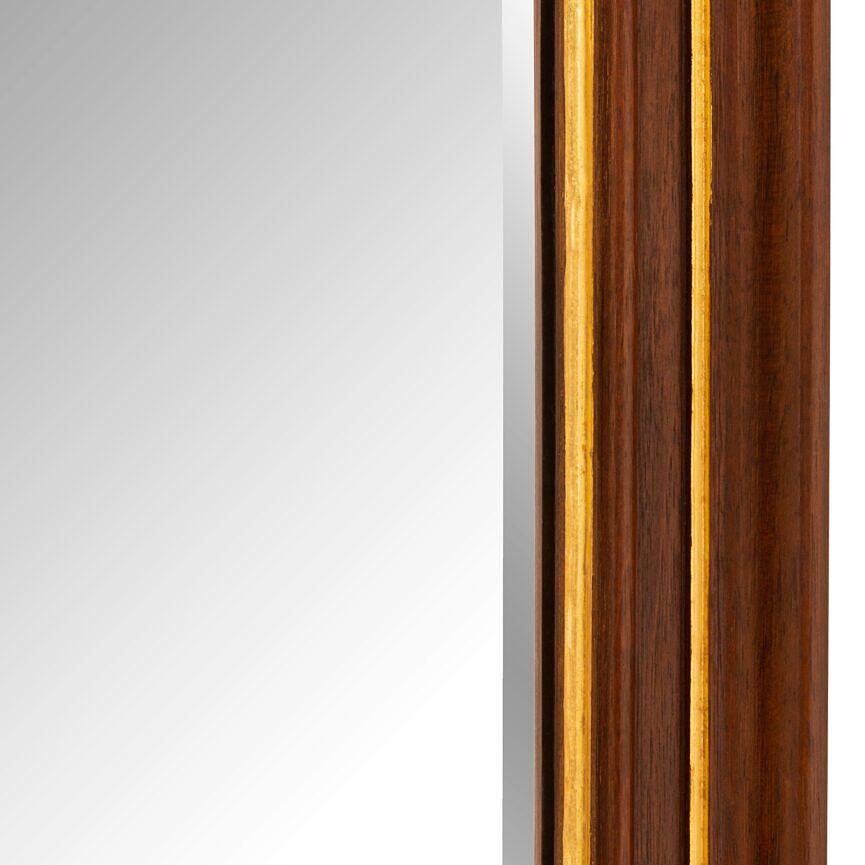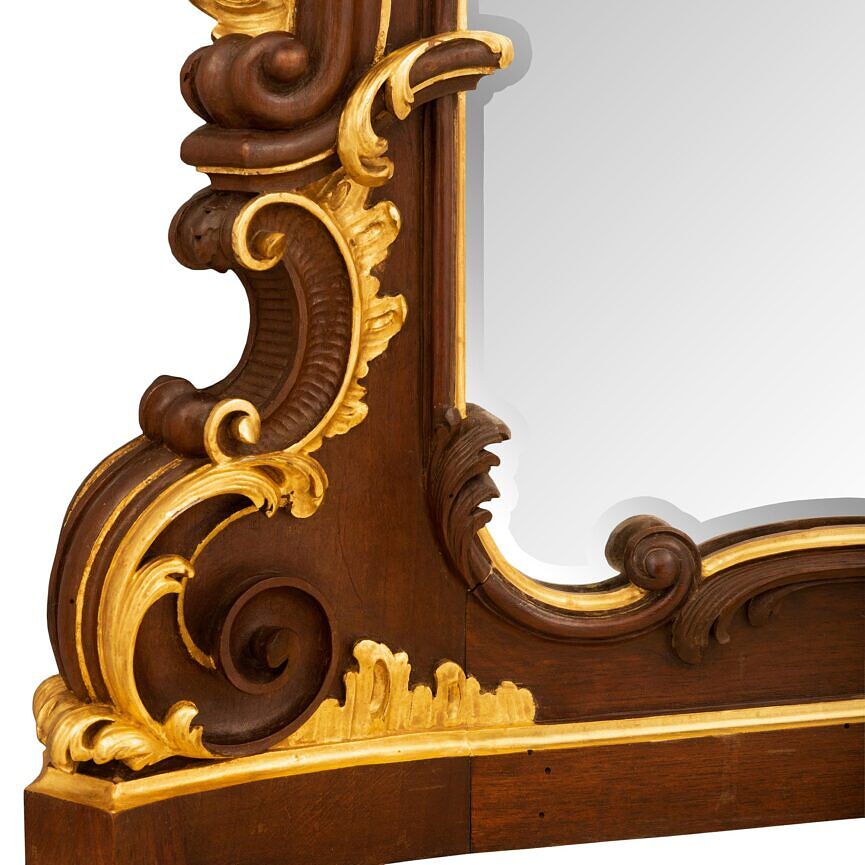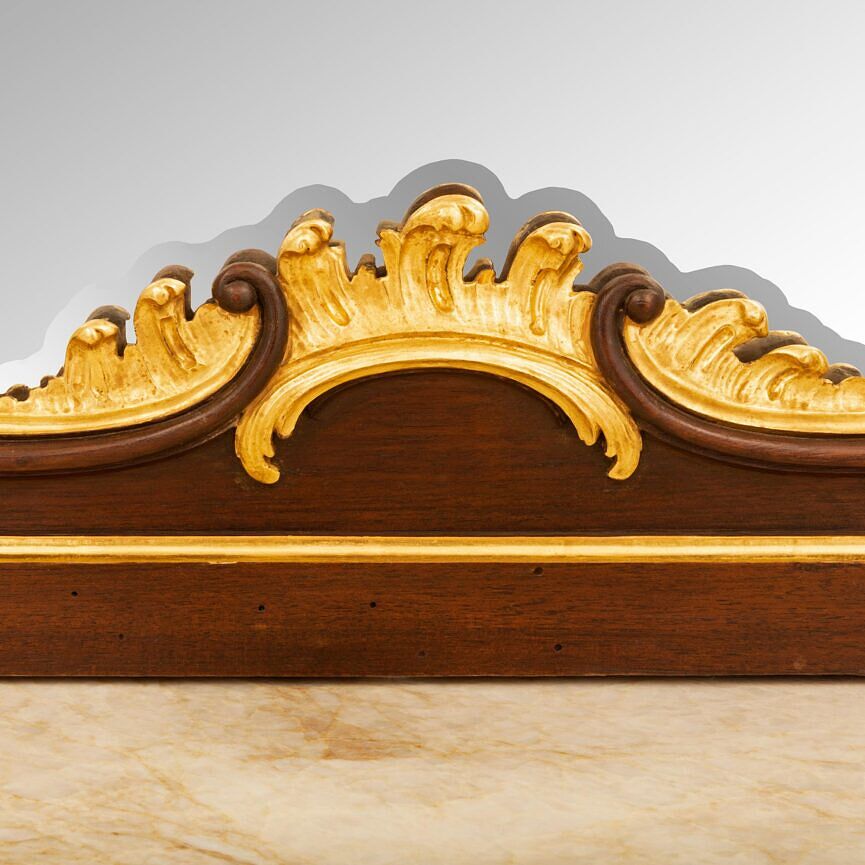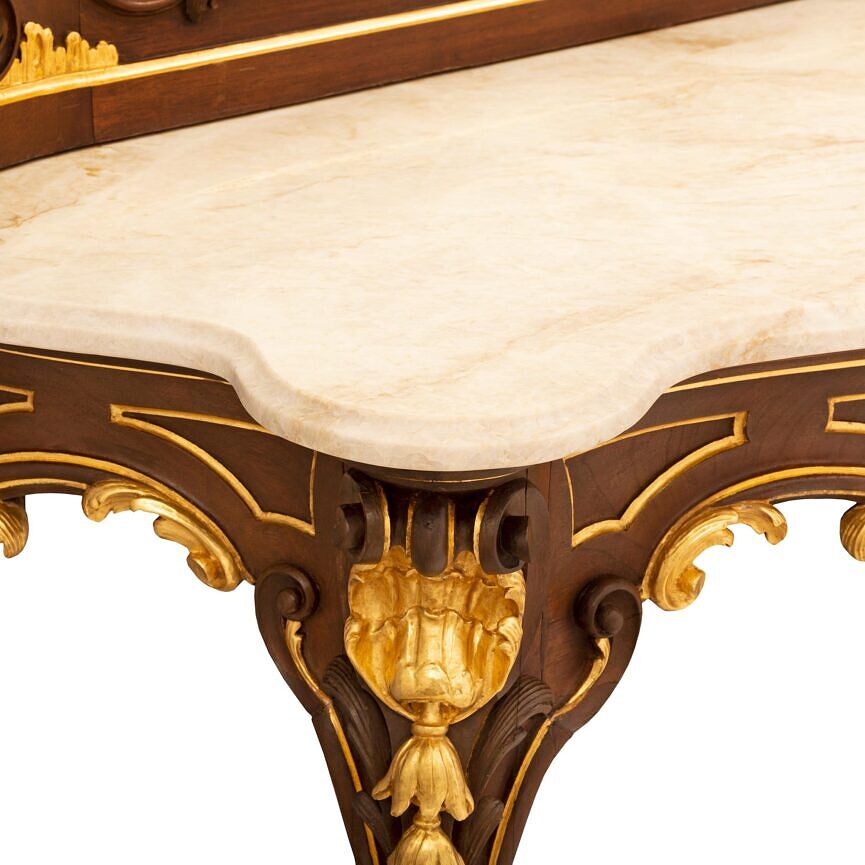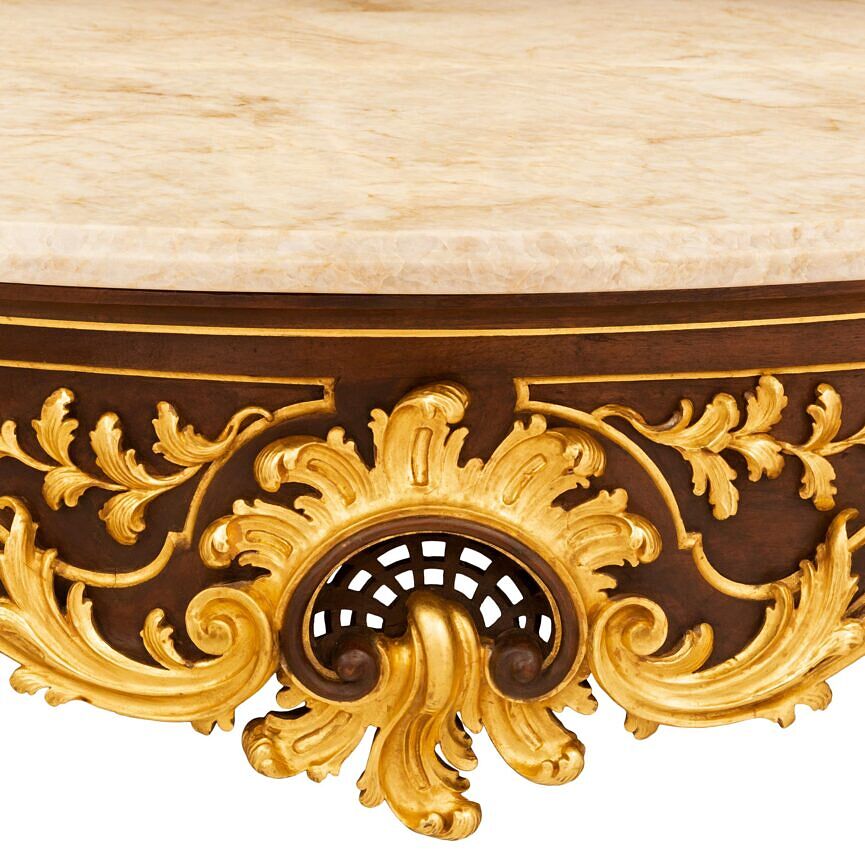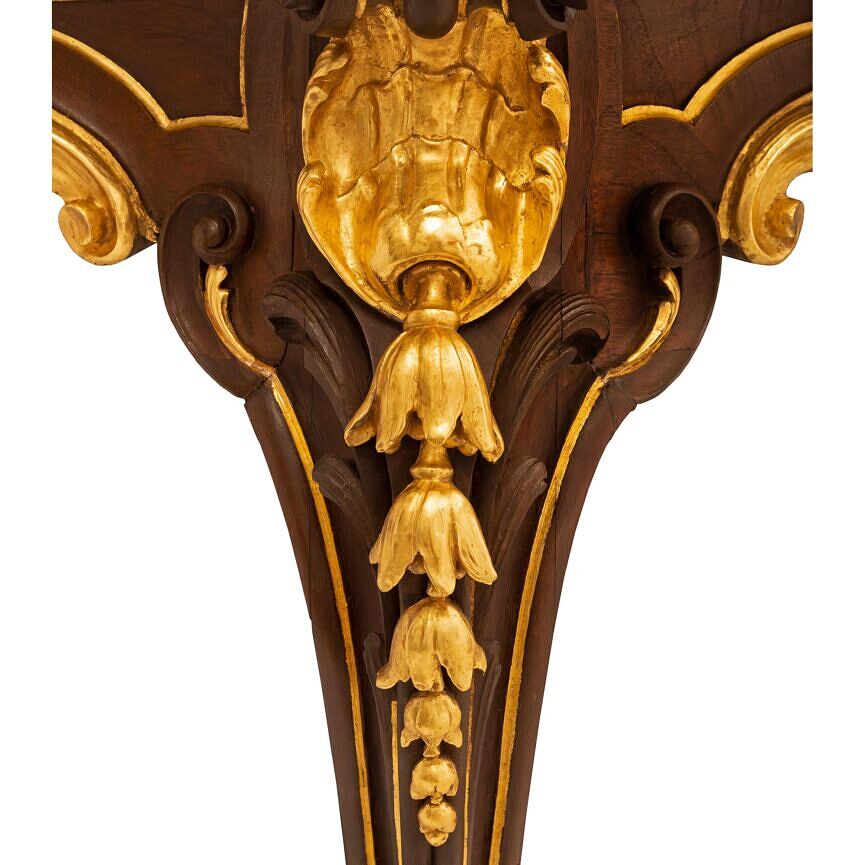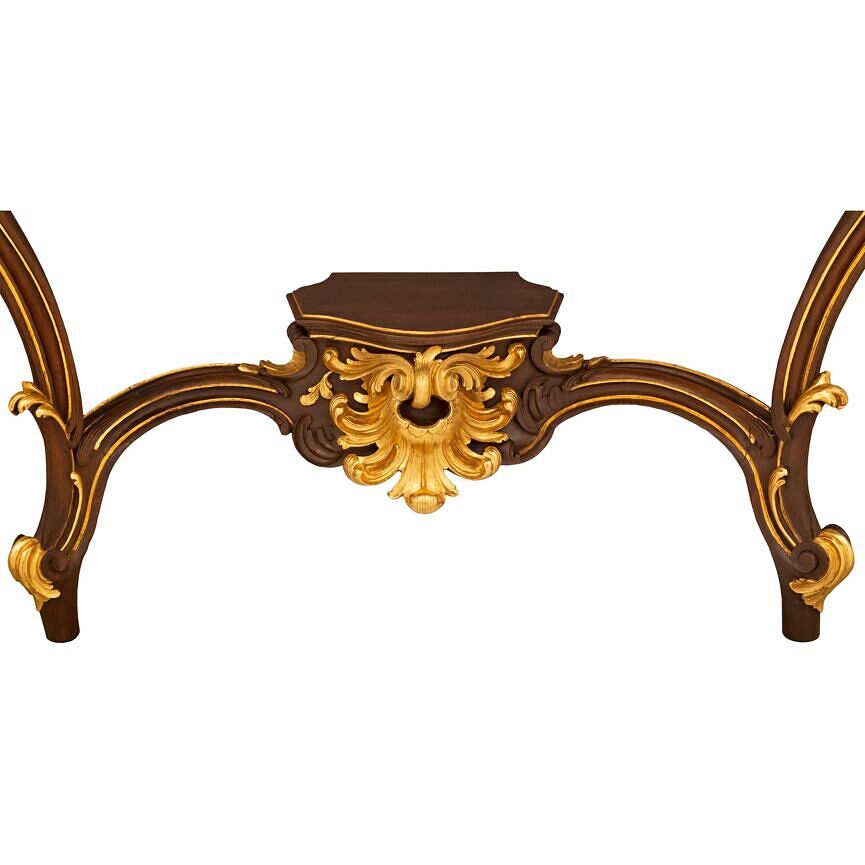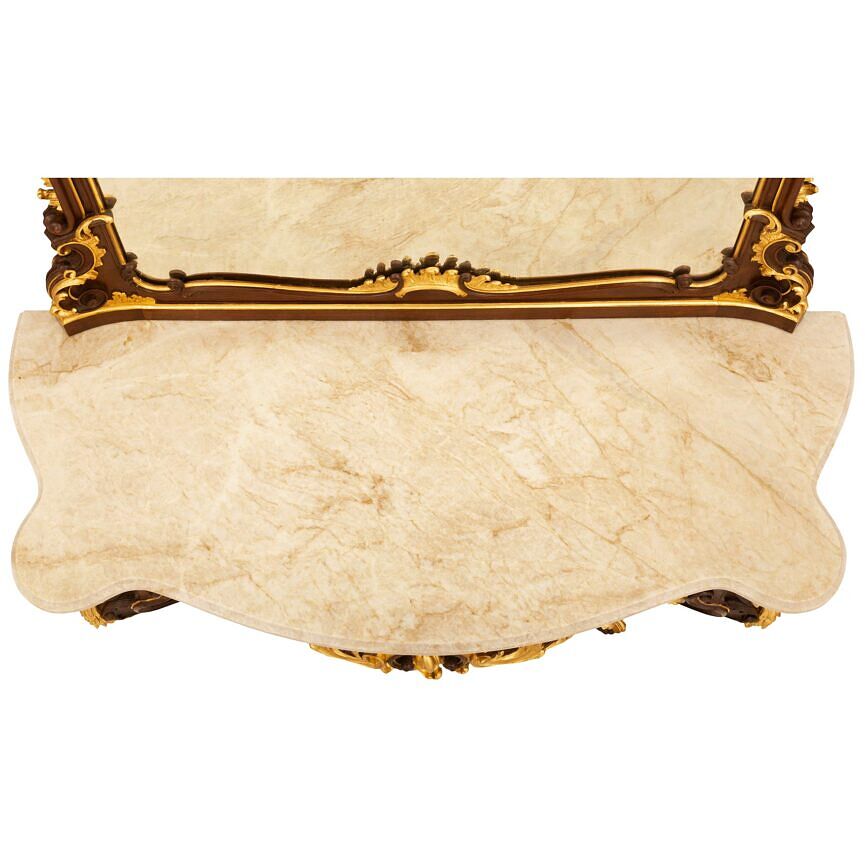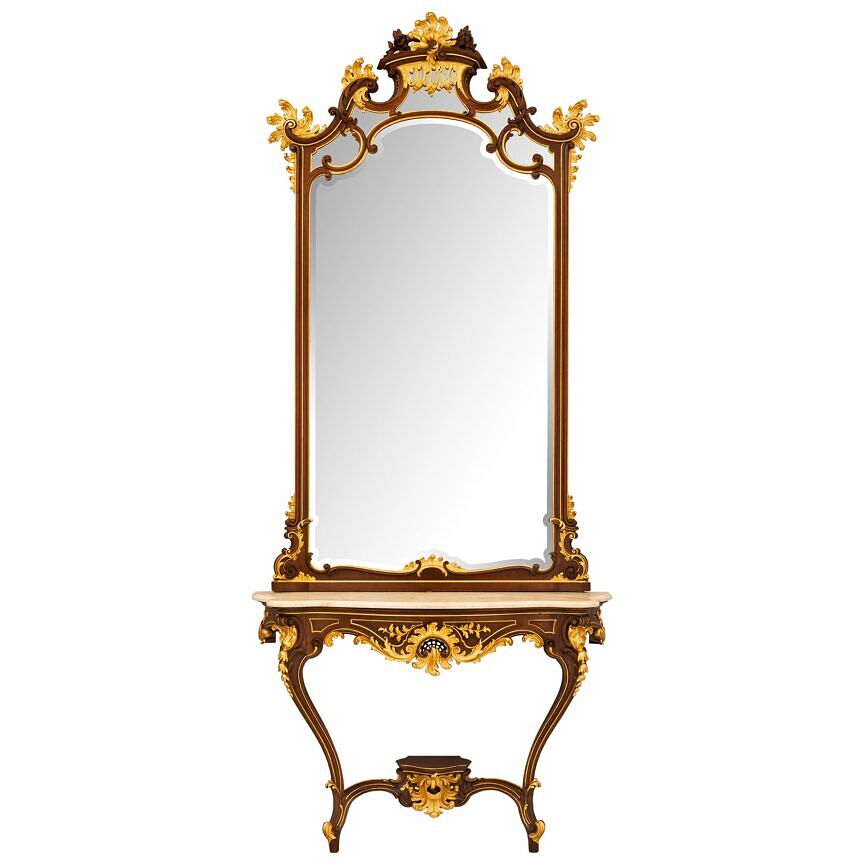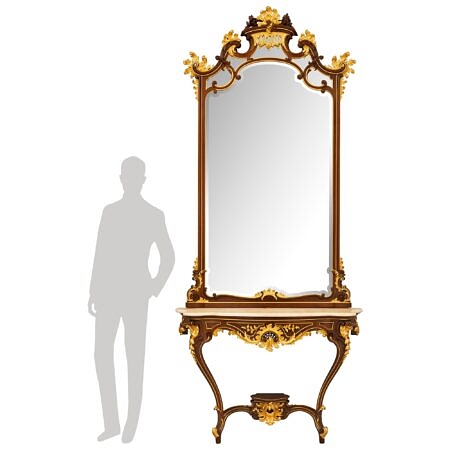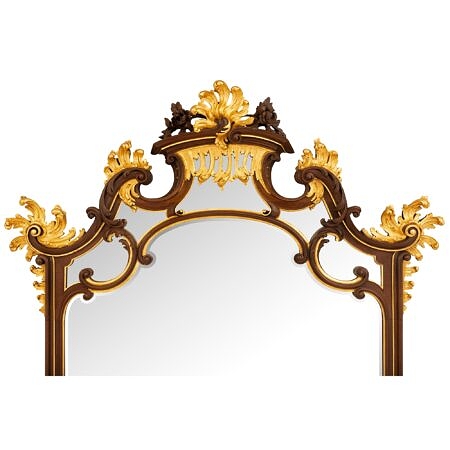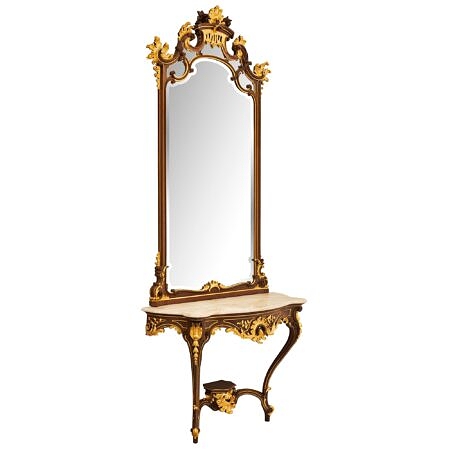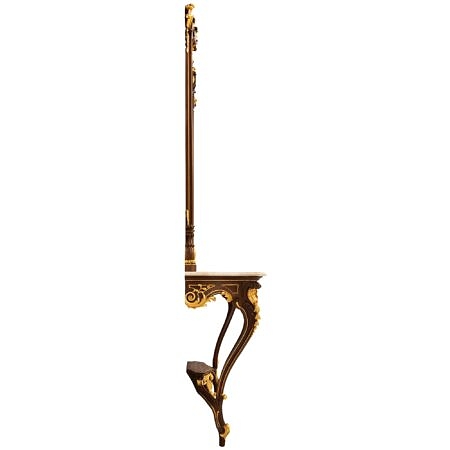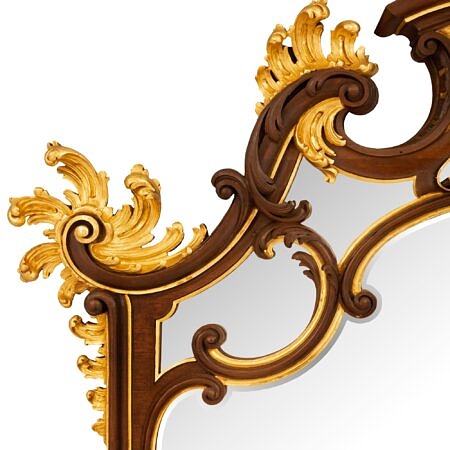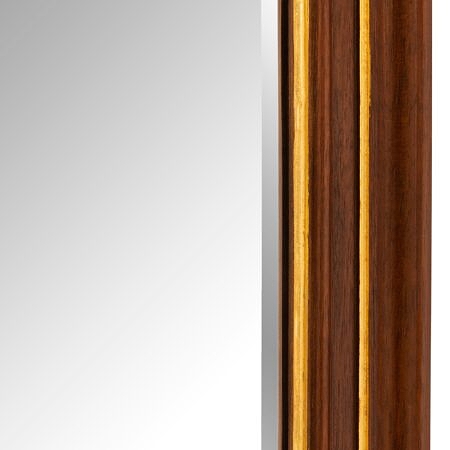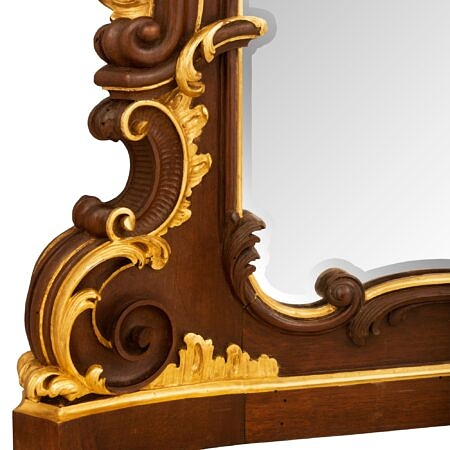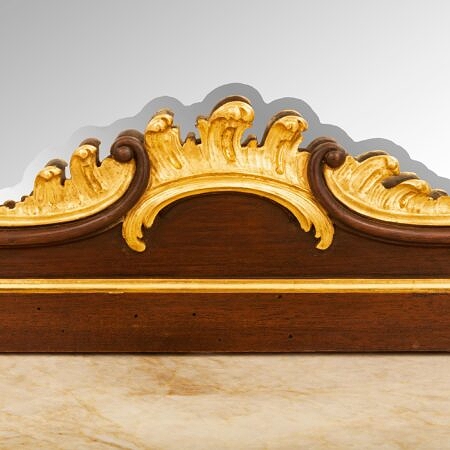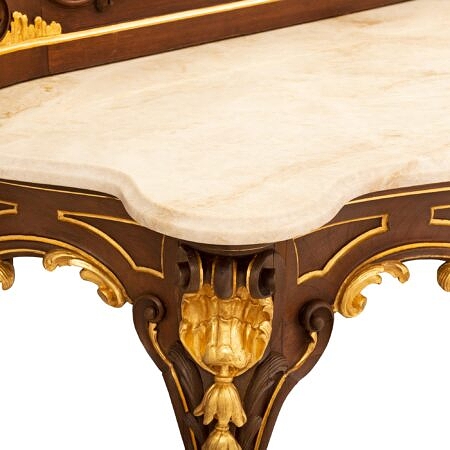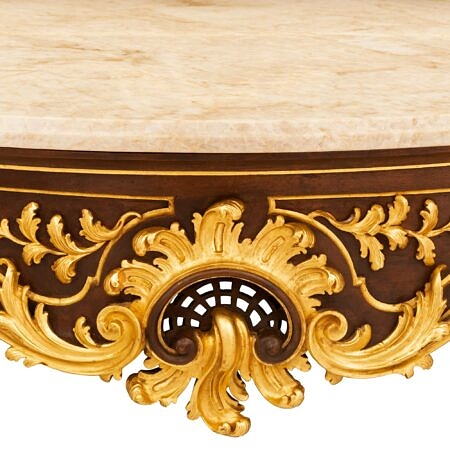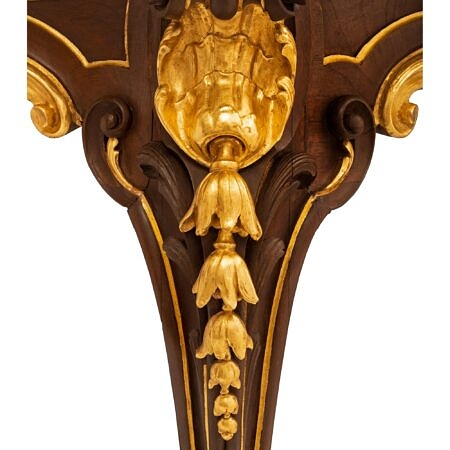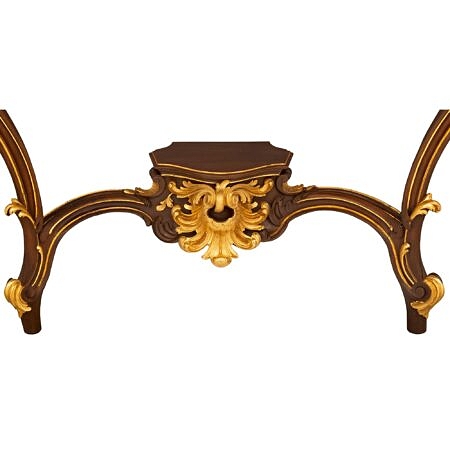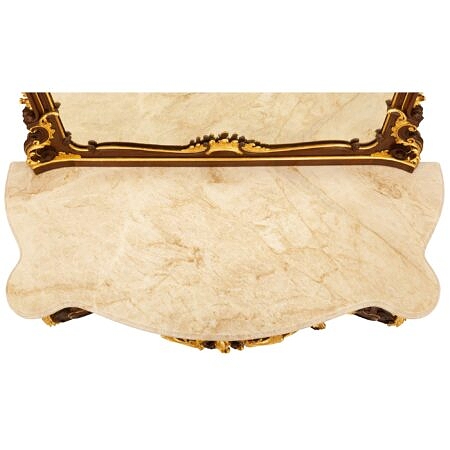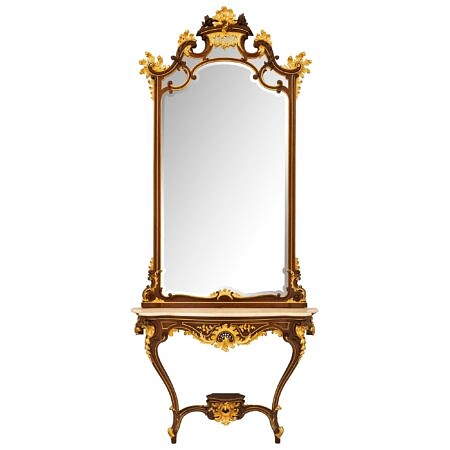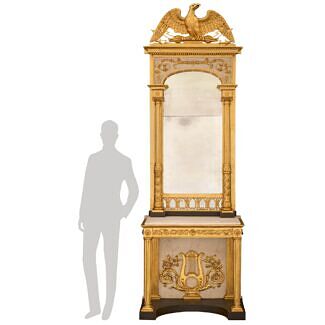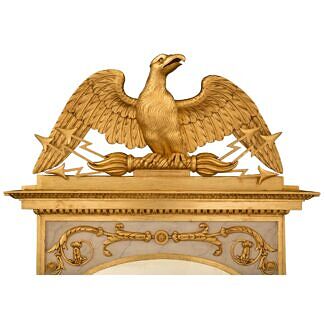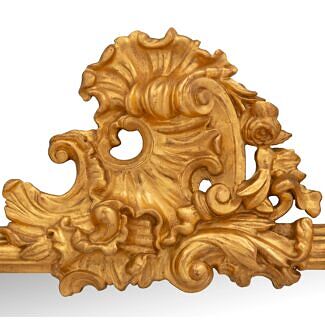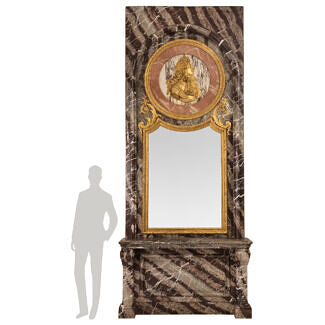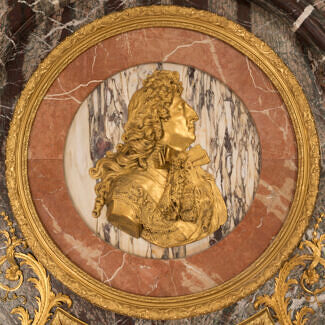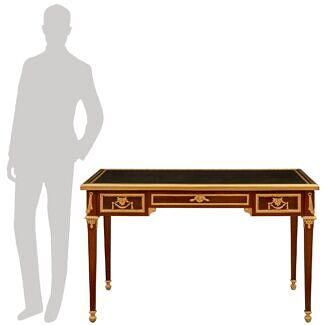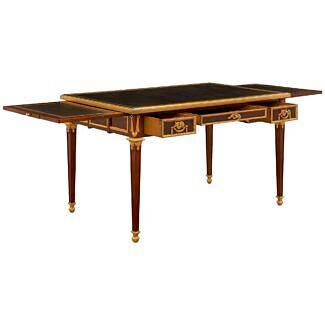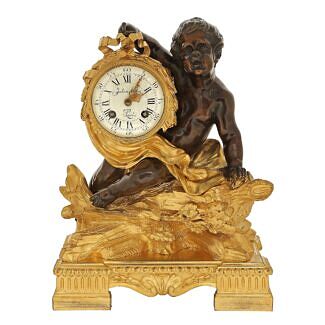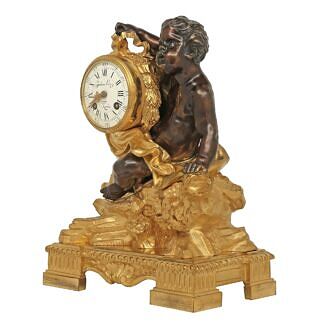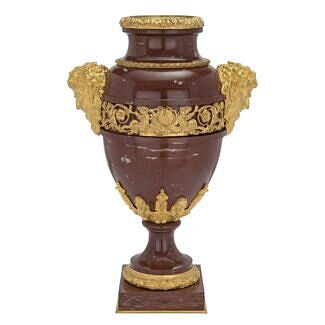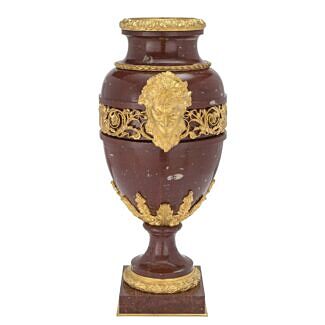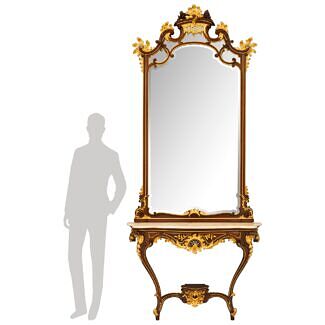A French 19th century Louis XV st. Belle Époque period Walnut, giltwood and Alabastro marble console and mirror attributed to François Linke
List: $26,800.00
A stunning and most impressive French 19th century Louis XV st. Belle Époque period Walnut, giltwood and Alabastro marble console and mirror attributed to François Linke. The wall mounted console is raised by two extremely elegant cabriole legs with fine... — Read More
A stunning and most impressive French 19th century Louis XV st. Belle Époque period Walnut, giltwood and Alabastro marble console and mirror attributed to François Linke. The wall mounted console is raised by two extremely elegant cabriole legs with fine scrolled feet adorned with lovely giltwood acanthus leaves and delicate fillets leading to charming richly carved berried laurel and seashell like corner carvings. The legs are connected by a most decorative and uniquely curved mottled stretcher with additional fine giltwood fillets and a large remarkable palmette and foliate reserve below a wonderful display shelf. The powerful scalloped shaped frieze displays elegant curved movements with exquisite richly carved flowing acanthus leaves centering the outstanding central reserve with richly carved foliate designs and a pierced lattice center. The sides also display a lovely scrolled movement with additional foliate carvings below the curvaceous Alabastro marble top with a fine mottled border. Above is the original matching mirror retaining its original mirror plates raised by a straight mottled base and framed within an elegant mottled border. The majestic top crown display graceful scrolled movements with lovely mottled designs and beautiful richly carved acanthus leaves with a pierced gadroon foliate reserve and striking top palmette reserve flanked by charming blooming flowers.
François Linke (1855-1946) Renowned 19th Century Parisian Ébéniste. Linke created historical interpretations of Louis XV and Louis XVI styles. He displayed at the Paris Universal Exhibition of 1900 where he received a gold medal.
Mirror Dimensions: H: 82.75" L: 47.75" D: 3.75"
Console Dimensions: H: 35.5" L: 51.25" D: 19.5" — Read Less
- Item # 4969
-
H: 118.25 in L: 51.25 in D: 19.5 in
H: 300 cm L: 130 cm D: 50 cm
- France
- 19th Century
- Giltwood, Marble/Stone, Walnut
- Belle Époque Period Read More, Louis XV st. Read More
- François Linke Read More
Related products
-
# 11971 - H: 115" L: 36" D: 22"
-
# 11526-11527 - H: 96" L: 43" D: 20"
-
# 4358 - H: 148" L: 62" D: 12"
Recently Viewed View All
-
# 13703 - H: 31" L: 51" D: 31"
-
# 7442 - H: 13" L: 10" D: 6"
-
# 8118 - H: 20" L: 13" D: 8"
-
# 13102 - H: 30" L: 48" D: 29"


